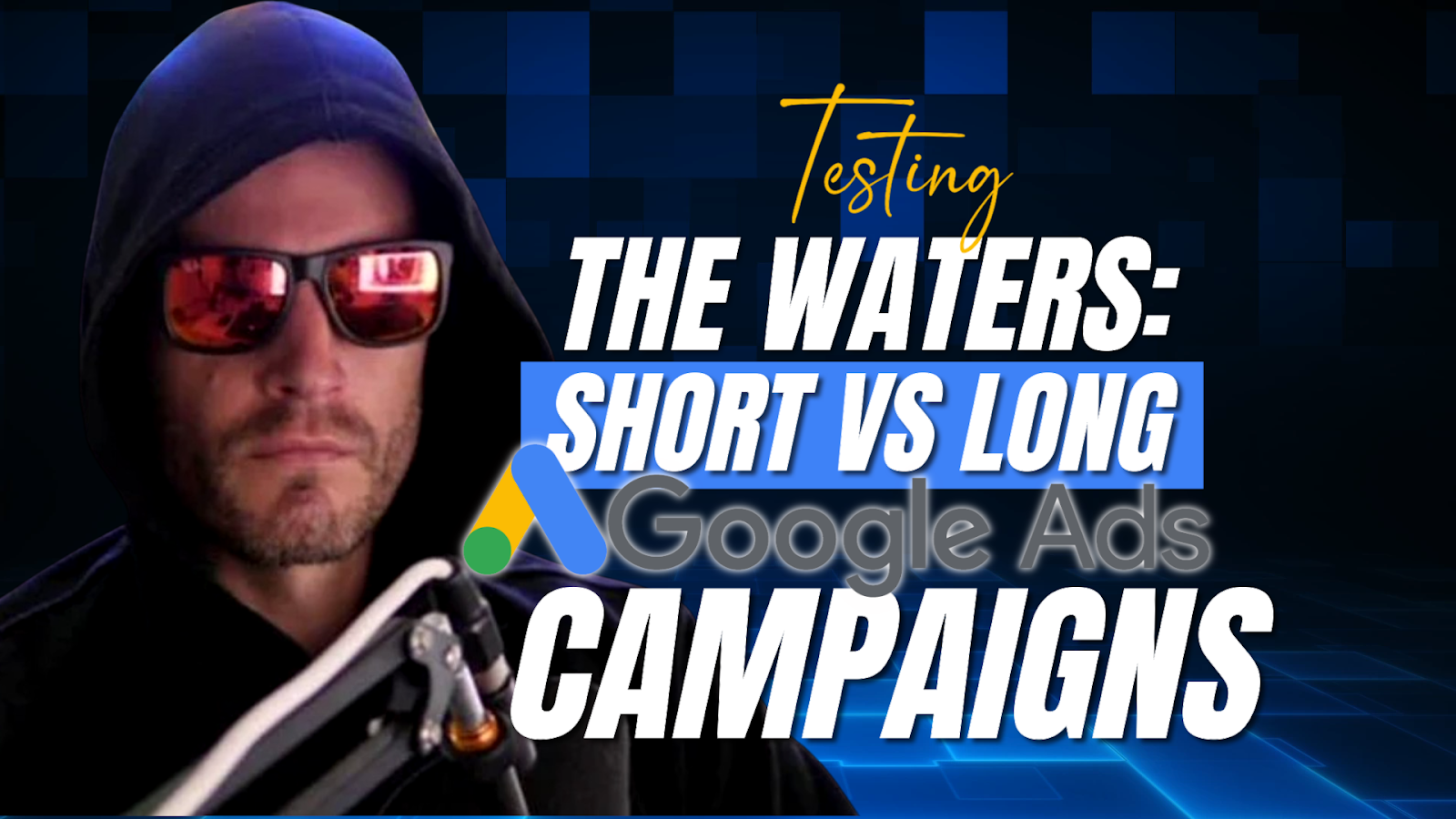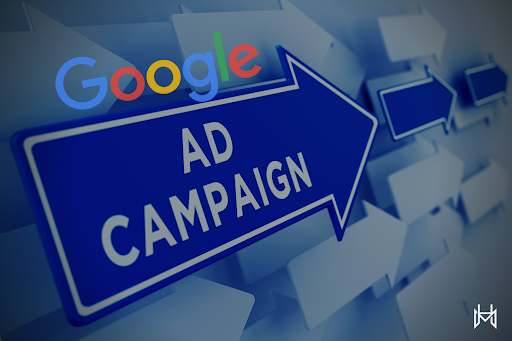
Testing the Waters: Short vs Long Google Ads Campaigns
Are you looking for ways to maximize the impact of your advertising campaigns? Google Ads is an effective tool that allows businesses of all sizes to reach their target audience cost-effectively. It offers two types of campaign options — short and long — which can be used to create powerful advertising strategies.
The challenge lies in understanding which campaign type best suits your business goals. Many companies struggle to determine whether a short or long Google Ads campaign is more likely to yield successful campaigns. It requires careful consideration of various factors such as target audience, budget, and market competition.
While it can be daunting to decide between the two campaigns, this article provides an overview of both types of campaigns and outlines factors to consider when selecting one. It also shares best practices for running successful short and long Google Ads campaigns to ensure maximum results. Read on to learn more about how to test the waters with short and long campaigns.
Short Google Ads Campaigns

Short Google Ads campaigns typically last for 30 days or less. These campaigns are ideal for businesses that need a quick burst of ad activity to test the waters and get immediate results.
Pros
- Quick results: Short campaigns allow businesses to quickly test out different ad strategies and receive feedback in a short amount of time. This can be very beneficial for companies looking to gain insight rapidly.
- Cost-effective: They don’t require a huge budget and can be run without breaking the bank. Because of their shorter duration, these campaigns are usually cheaper than long campaigns, making them ideal for businesses with a limited budget.
- Easy to manage: The short period of these campaigns makes them easier to manage. A company doesn’t need to dedicate a lot of time and effort to monitoring the progress of these campaigns, as they usually don’t require constant tweaking or adjustments.
- Ideal for limited-time promotions: Short campaigns are perfect for businesses that want to run one-off promotions or special offers. They can create a sense of urgency around the promotion, which can be beneficial for generating more sales.
Cons
- Limited data: Due to their shortened duration, these campaigns are not able to generate enough data that can be used to further adjust the ad strategy. The insights gained from short campaigns are often insufficient to optimize the ad effectively.
- Less optimization: With a limited amount of time, achieving maximum optimization for these campaigns can be difficult. This makes it hard to fine-tune the ad for optimal performance.
- Narrow focus: Since these campaigns are designed to last for a short time, they often have a narrow focus that can limit their effectiveness.
- Difficult to build brand awareness: Short campaigns usually don’t have enough time to build brand awareness. This can make it difficult for businesses to establish a presence in the market.
Long Google Ads Campaigns: Pros and Cons

Long Google Ads campaigns are campaigns that last for more than 30 days. They allow businesses to take a long-term approach and develop campaigns that will have an impact over time. By running these campaigns, businesses can gain valuable insights into their target audience and create ads tailored to their needs.
Pros
Here are the advantages of long Google Ads campaigns:
- More data: With a longer duration, businesses can collect more data on their target audience and gather valuable insights that can be used to further optimize their ad strategy.
- Better optimization: A longer duration allows businesses to fine-tune their ads and make adjustments over time that will improve performance. This is especially beneficial for companies looking to maximize their ROI.
- Stronger brand recognition: Long campaigns allow businesses to develop a presence in the market and build brand awareness over time. You can also use longer campaigns to reach new audiences and expand your reach.
- Increased flexibility: Long campaigns allow businesses to be more creative with their ads and try out different strategies without having to worry about the duration of the campaign. They also give companies more time to analyze their results and adjust as needed.
Cons
- Higher cost: Longer campaigns tend to be more expensive, requiring businesses to invest more money. This can be off-putting for companies with a limited budget.
- Potential burnout: Running a campaign for an extended time can lead to burnout, resulting in poor performance and decreased returns on investment.
- Takes longer to see results: With a longer campaign comes a longer wait time before businesses can start to see the benefits of their efforts.
- Less urgency to act: Long campaigns don’t create a sense of urgency, making it difficult for businesses to motivate customers and prospects to take action.
- Difficulty tracking performance: Long campaigns can be difficult to track since there’s no way to accurately measure progress until the campaign ends. This makes it hard for businesses to determine whether or not their efforts are paying off.
Factors to Consider When Deciding Between Short and Long Campaigns
Whether a business launches a short or long Google Ads campaign should depend on several factors. You need to make informed decisions to maximize the effectiveness of your campaigns and achieve the desired outcomes. Here are the most critical elements to help you decide between a short and long campaign:
Business Goals
The business goals are the primary factor to consider when deciding between short and long campaigns. Short campaigns can be effective for businesses that want to quickly reach potential customers. In contrast, long campaigns are better suited for businesses with longer-term objectives, such as building brand recognition and gaining insights into their target audience. Consider carefully what your desired outcome is before deciding on a campaign length.
On the other hand, if you’re looking for results that will last beyond a few weeks or months, then a longer campaign might be more beneficial. Longer campaigns allow businesses to establish relationships with potential customers, build trust, and create loyalty. This is especially beneficial if you’re looking to expand your customer base and grow your business over the long term.
Target Audience
You should also consider your target audience when deciding between short and long campaigns, as different audiences respond differently to marketing campaigns. If you have an ideal audience you’re targeting, then a short campaign may be beneficial for quickly reaching them. This is especially true if the target audience is already familiar with the brand or product and just needs to be reminded of its existence.
A longer campaign is likely more suitable if you want to reach out to new potential customers. This will allow you to gradually introduce your brand to the target audience and build relationships. Longer campaigns also enable businesses to experiment with different strategies and tailor their message based on customer feedback.
Finally, a long campaign can be beneficial if you want to increase visibility and reach out to potential customers outside of your ideal target audience. This can help you gain insights into the customers and create opportunities for long-term engagement.
Budget
Short campaigns are typically more cost-effective since they require fewer resources and shorter setup times. The primary consideration when budgeting for short campaigns is the daily budget, ranging from a few cents to thousands of dollars, depending on the campaign size. Additional costs, such as creative work, content writing, and optimization services, may also need to be factored in.
For long campaigns, businesses should consider their overall budget and the amount they can afford to spend per month on the campaign. This will help them create a sustainable marketing strategy tailored to their needs and resources. Additionally, businesses should keep in mind the cost of ongoing optimization services and other related expenses, such as content creation, that may be necessary to ensure the success of the campaign.
Moreover, businesses should consider their time and expertise when budgeting for a campaign. If they lack the skills and resources to effectively manage a long campaign, outsourcing these services can help them maximize their return on investment.
Competition in the Market
A digital marketer’s success is highly dependent on their marketing strategy and the strength of their campaigns. Companies should consider their competition when deciding between short and long campaigns, as their competitors may already have a strong presence in the market. It could be beneficial to launch a more extended campaign to overtake a competitor who has already established themselves with customers.
On the other hand, if there is not much competition in the market, a shorter campaign may be suitable to quickly build brand awareness and reach potential customers. Companies should also consider their competitors’ strategies when planning their campaigns, as this could give them valuable insights on differentiating their offerings.
Best Practices for Short and Long Campaigns
Digital marketing success relies on having a well-defined strategy and effective campaigns. To ensure the best results, businesses should follow simple best practices for short and long campaigns. Here are the top tips for optimizing campaigns and maximizing return on investment:
Define Clear Objectives
When launching a campaign, businesses should clearly understand their advertising goals and ideal customers. This will ensure that the message is tailored to their target audience and help them determine the right budget for the campaign. Additionally, having clear objectives can help businesses measure the success of their campaigns more effectively.
In short campaigns, defining objectives is especially important since they typically require fewer resources and shorter setup times. For long campaigns, goals should also be established, but businesses should also consider the cost of ongoing optimization services and other related expenses to ensure success.
Conduct Thorough Keyword Research
Keyword research is essential in any successful marketing campaign as it helps businesses identify relevant keywords and search queries to target. Through keyword targeting, companies can ensure that their ads are seen by the right people at the right time. When conducting keyword research, businesses should consider both short-term and long-term goals when selecting keywords and phrases.
For short campaigns, businesses should focus on targeting relevant keywords likely to generate immediate results. For long campaigns, businesses should also focus on finding more longevity keywords to maintain their search presence over an extended period. Additionally, companies should utilize tools such as Google AdWords Keyword Planner to uncover more target keywords and gain insights into the competition.
The key is considering which keywords will likely generate the most qualified leads over time. By focusing on quality over quantity when selecting keywords, businesses can ensure that their campaigns are more successful and sustainable in the long run.
Craft Compelling Ad Copy
The ad copy is one of the essential elements of a successful campaign as it informs potential customers about the company’s offerings and entices them to take action. You want your ad copy to stand out and make a lasting impression.
Here are a few tips for crafting compelling ad copy for both short and long campaigns:
- Focus on the benefits: Make sure to highlight the benefits of your product or service to capture people’s attention.
- Utilize emotional appeal: Appeal to people’s emotions by including words that evoke a sense of urgency or excitement.
- Keep it simple: Don’t overcomplicate the ad copy. Keep it straightforward and easy to read.
- Include a call-to-action: Encourage people to take action with a clear call-to-action.
Utilize Landing Pages for Higher Conversion Rates
Imagine a potential customer seeing your advertisement and clicking to find out more. When they land on your page, they find irrelevant content or outdated information. This reduces the chance of success for your campaign and frustrates the potential customer.
A successful campaign should incorporate landing pages tailored to the ad copy and keyword targeting. Landing pages should be optimized with relevant, up-to-date content that is tailored to each target audience. Additionally, businesses should ensure that their landing page content is optimized for mobile devices to maximize the chances of success.
By utilizing landing pages with high-quality content, businesses can improve conversion rates and customer experience. This will help boost the performance of both short and long campaigns and set businesses up for success.
Monitor Campaign Performance
Successful campaigns require ongoing monitoring and optimization to ensure the best results. Businesses should set aside time each week or month to review campaign performance and make adjustments as needed. During this process, companies should monitor metrics such as click-through rates, cost per click, conversions, and other relevant KPIs.
You need to identify which strategies are working and which need improvement or change. By monitoring performance regularly, businesses can optimize their campaigns for maximum efficiency and ensure their ads reach the right people. Additionally, companies should consider using automated tools such as Google Ads to help streamline the process and save time.
Take the Plunge and Test the Waters with Short or Long Google Ads Campaigns
Google Ads campaigns—short and long—offer a powerful way to reach, engage, and convert your target audience. With careful consideration of factors such as business goals, target audience, budget, and competition in the market, both types of campaigns can be leveraged to create successful strategies.
To reap the benefits of a short or long Google Ads campaign, it is essential to define clear objectives, conduct thorough keyword research, craft compelling ad copy, monitor and adjust frequently, and utilize landing pages for higher conversion rates. With the right approach and execution, you can find the perfect balance between short and long campaigns that work best for your business.
While there is no one-size-fits-all approach to Google Ads campaigns, the best way to find out which works for your business is to test the waters and see what gives you the highest return on investment. Take a plunge today to realize the full potential of Google Ads.
